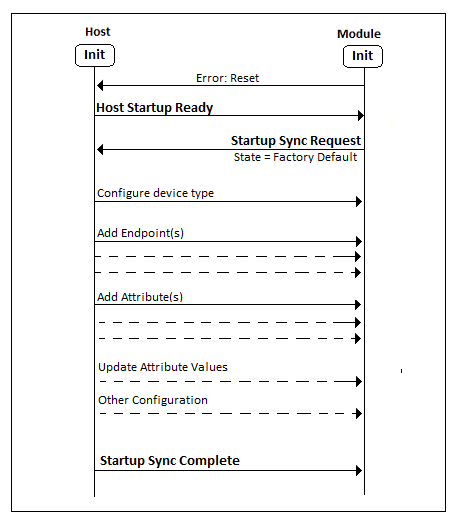...
The diagrams in this section illustrate the Startup Synchronization sequence.
The following figure illustrates the sequence when the Module initializes more quickly than the Host(scenario (2)). The Module retries the Startup Sync Request periodically to ensure that the Host receives the message even if the Host starts up slower than the Module.
...
Note: please note there is an error in the above diagram. The final Startup Sync Complete message should be going from the Host to the Module and not in the direction shown.
The next figure illustrates the expected Startup Synchronization sequence following the first power up of the Module from its factory default state. In this diagram, the Configuration and Updates phase from the previous figure has been expanded to show key operations performed by the Host.
| Anchor | ||||
|---|---|---|---|---|
|
The next figure illustrates the Startup Synchronization sequence after power up of a configured Module (i.e., subsequent to the state achieved in the previous figure). The application device type does not need to be defined as it is preserved in non-volatile memory. All configured endpoints, clusters and attributes are stored in volatile memory and must be re-configured after any soft or hard reset of the Module.
...
